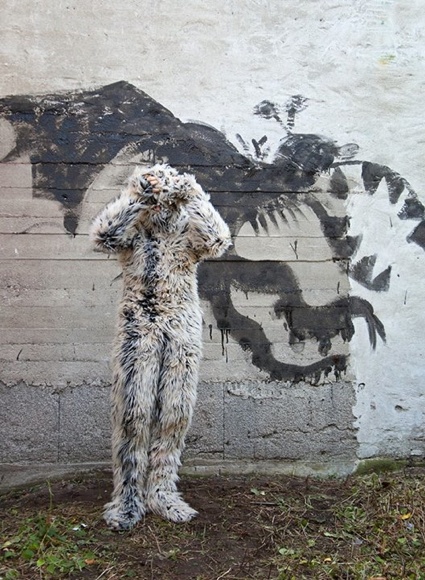 Anthony Clair Wagner. Photo: Fanny Carinasdotter
Anthony Clair Wagner. Photo: Fanny Carinasdotter
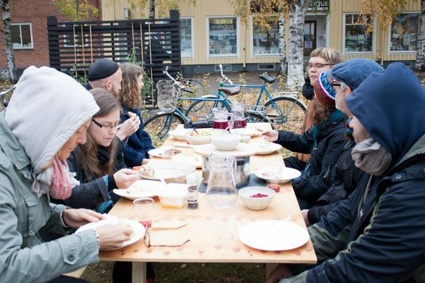 Umeå Skafferi / Umeå Pantry at Pilgatan 16 (photo)
Umeå Skafferi / Umeå Pantry at Pilgatan 16 (photo)
It’s almost 2015 and i still have to write reviews of a couple of festivals i’ve visited over the Autumn. The first one that was languishing in my draft is the very smart, very socially-engaged and exciting Survival Kit festival in Umeå, Sweden. The event explored the theme of local and global survival through the lenses of visual art, music, food, discussions and lectures.
How can we look at issues such as ecology, economy and human survival at large? And on a more personal level: how can I navigate as an individual in this new and complex world?
Wherever we look, there is a feeling how being disconnected, of living in the midst of uncertainties regarding our economic and political systems, social structures, and ecological future. The Survival Kit Festival looked at what can be done to regain some control. The artists and activists selected don’t stop at denouncing what is wrong with society and the world at large, they also document or implement small, practical solutions that might ensure our survival. These experiments go from building a biodome with an aquaponic system for fish and vegetable cultivation to converting a parking lot into a collective garden. From proposing a new currencies for culture to inviting the public to a cup of chaga mushroom tea.
I had never been to Umea. It’s a small city and it was pissing rain all along. Yet, i found that place amazing: strong leftie values, free wifi on public buses, a culture of veganism and cheerful cut-out figures greeting you at the entrance of supermarkets:
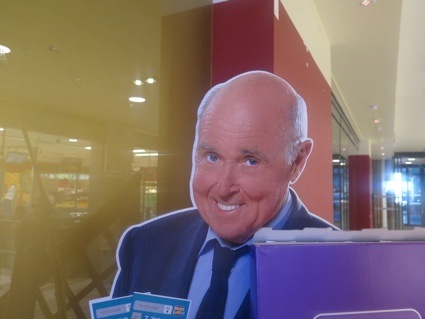
Also i slept inside a prison cell. So what was not to love?
Here’s a small selection of the works i discovered at the festival:
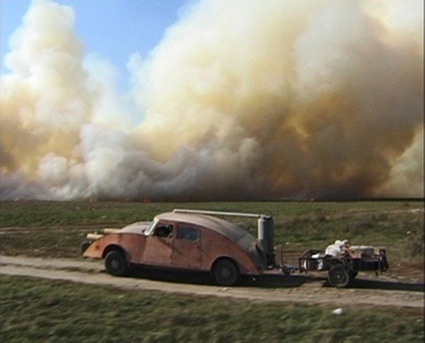 Joost Conijn, Wood Car, 2002
Joost Conijn, Wood Car, 2002
![]() Joost Conijn, Wood Car, 2002
Joost Conijn, Wood Car, 2002
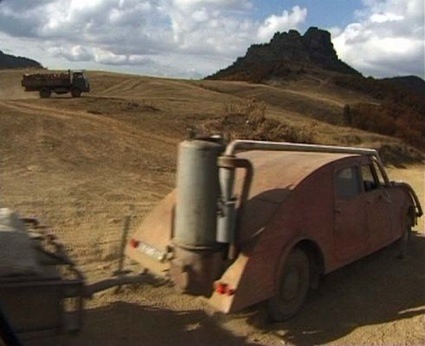 Joost Conijn, Wood Car, 2002
Joost Conijn, Wood Car, 2002
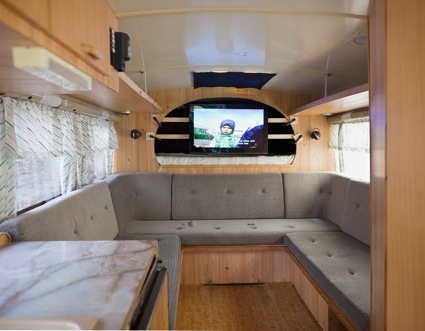 View of Joost Conijn video installation inside John Söderberg’s caravan, at Verkligheten. Photo: Fanny Carinasdotter
View of Joost Conijn video installation inside John Söderberg’s caravan, at Verkligheten. Photo: Fanny Carinasdotter
In 2001 Joost Conijn spent the Summer riding a car he had built himself through Eastern European countries. The car is made out of wood, it runs on wood and because the world economically runs on oil, the artist wasn’t going from petrol station to petrol station (like we normally would) but from rural area to rural area with no specific destination nor itinerary.
His objective was to use the plywood-clad vehicle as a ploy to generate unexpected situations and meetings across the road. The film of his expedition shows people in small villages guiding him to local saw-mills, offering him spare wood and inviting him to a picnic.
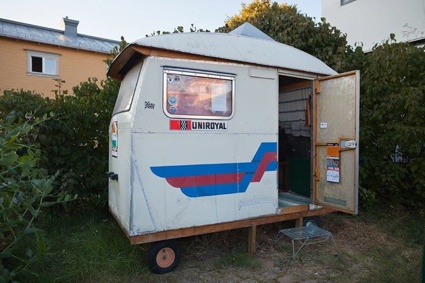 John Söderberg at Verkligheten. Photo: Fanny Carinasdotter
John Söderberg at Verkligheten. Photo: Fanny Carinasdotter
Conijn’s film is screened inside John Ola Söderberg’s caravan. I really REALLY like that one, it is simply a caravan made out of a caravan.
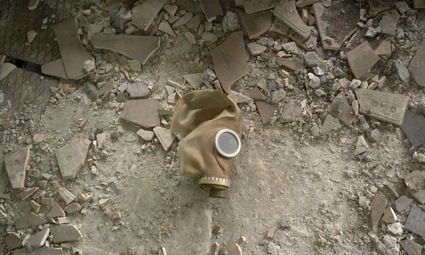 Siri Hermansen, Chernobyl Mon Amour, 2012 (video still)
Siri Hermansen, Chernobyl Mon Amour, 2012 (video still)
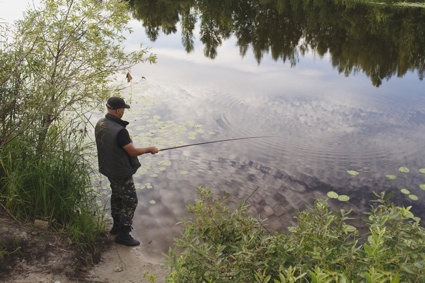 Siri Hermansen, Chernobyl Mon Amour, 2012 (video still)
Siri Hermansen, Chernobyl Mon Amour, 2012 (video still)
Chernobyl Mon Amour, 2012 (Extracts)
Siri Hermansen‘s films shows what might emerge from complete despair and devastation. The festival was screening two videos that document the survival strategies developed by local communities and individuals who have chosen to live in Chernobyl and Detroit.
In Chernobyl Mon Amour, the artist follows two state-employed guides who take catastrophe tourists, journalists and scientists to the exclusion zone of Pripyat, a city built for the families of power plant workers and evacuated at the time of the disaster in 1986.
In the interview, they talk about their fondness of the area. One of them even describes how he believes that his body is now accustomed to the radioactivity and how, after five years in the zone, his body actually gets ill when he enters the normal world. They both stay longer and longer periods in Chernobyl, ignoring the breaks their doctors advise.
They add that if you look around, it appears as if the whole nature is thriving in this radioactive environment. More and more animals are moving into it and vegetation grows unrestrained.
To them the zone offers a unique situation of hope, freedom and possibility within the hardships of Ukrainian society, and they describe Chernobyl as their “paradise”.
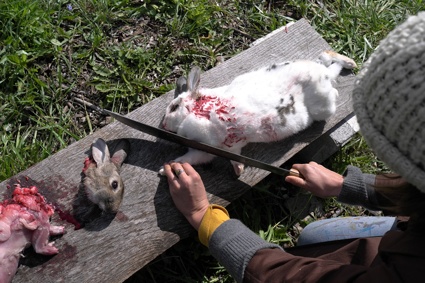 Siri Hermansen, Land of Freedom, 2012
Siri Hermansen, Land of Freedom, 2012
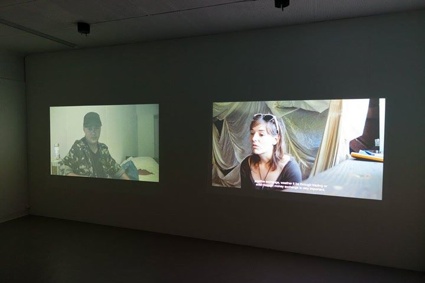 Siri Hermansen at Verkligheten. Photo: Fanny Carinasdotter
Siri Hermansen at Verkligheten. Photo: Fanny Carinasdotter
In the other film shown in the gallery, Land of Freedom, Hermansen follows the members of The Yes Farm, an artistic/activist community that moved from San Francisco to Detroit where they repaired and settled in one of the city’s many abandoned buildings. The members of the collective see Detroit as an opportunity to explore new ways to live a more sustainable and socially-conscious life, through farming, gardening and a return to skills that the Fordist economy made obsolete.
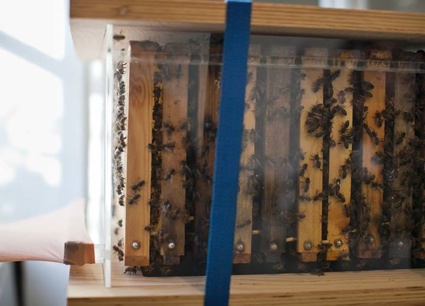 Gunilla Bandolin, Bi installation at Verkligheten. Photo: Fanny Carinasdotter
Gunilla Bandolin, Bi installation at Verkligheten. Photo: Fanny Carinasdotter
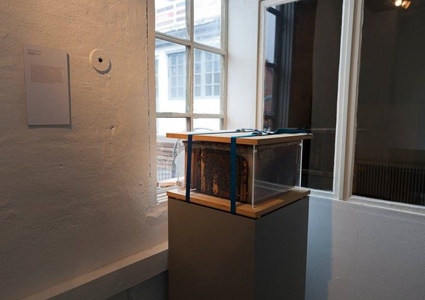 Gunilla Bandolin, Bi installation at Verkligheten. Photo: Fanny Carinasdotter
Gunilla Bandolin, Bi installation at Verkligheten. Photo: Fanny Carinasdotter
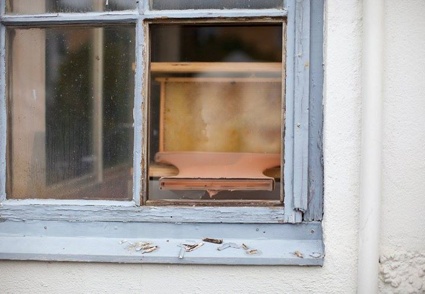 Gunilla Bandolin, Bi installation at Verkligheten. Photo: Fanny Carinasdotter
Gunilla Bandolin, Bi installation at Verkligheten. Photo: Fanny Carinasdotter
If the earth was destroyed, Gunilla Bandolin would start building up the whole survival process with a bee-hive. Bee hives provide you with honey and pollen, the bees would pollinate the few plants that subsisted and new crops would grow. A beehive also produces surplus warmth, and thus cheap, retrievable energy.
It is a prototype like this, or the beginning of it, that I have tried to create in this exhibition. I want the bee-hives to be made in a transparent material and preferable place them in a shopping centre to remind people of the conditions of our existence. It is calculated that about 70% of what we have on our daily plates is dependent on pollinating insects.
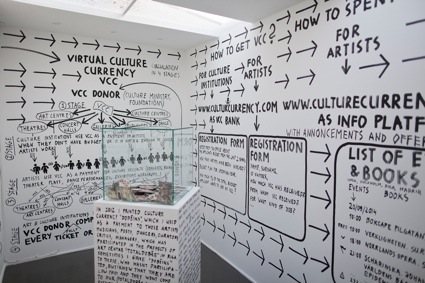 Kaspars Lielgalvis, Non-convertible culture currencies
Kaspars Lielgalvis, Non-convertible culture currencies
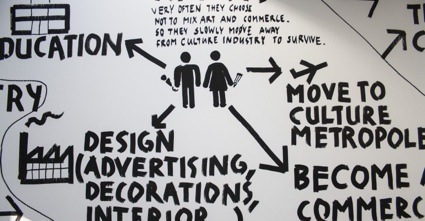
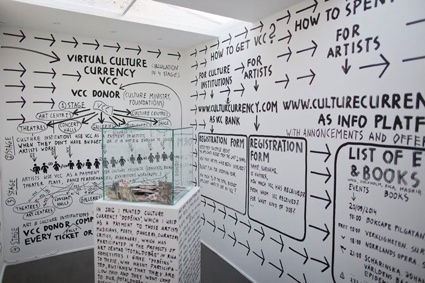 Kaspars Lielgalvis, Non-convertible Culture Currencies in Trailer Gallery, at Umeå University. Photo: Fanny Carinasdotter
Kaspars Lielgalvis, Non-convertible Culture Currencies in Trailer Gallery, at Umeå University. Photo: Fanny Carinasdotter
Artist and art manager Kaspars Lielgalvis proposes the use of a new culture currencies as a possible solution to the situation of funding culture which has suffered greatly from the ongoing financial crisis.
This new medium of exchange, called Non-convertible Culture Currencies, would be used only in the cultural context. The first Culture currency – Dobžiks is already in use since March 2012 as a valid payment for entering events at the Totaldobže Art Center in Riga. There is a plan to create a worldwide network of those organizations that will accept Culture currencies and use Culture currencies as a payment for work which is done in cultural field and in most cases is paid too less.
Other works and images from the festival:
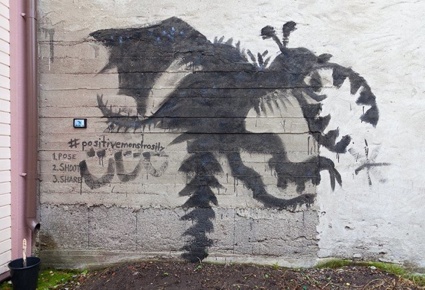 Anthony Clair Wagner. Photo: Fanny Carinasdotter
Anthony Clair Wagner. Photo: Fanny Carinasdotter
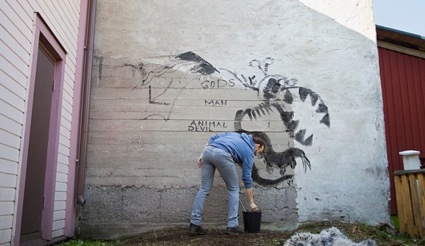 Anthony Clair Wagner. Photo: Fanny Carinasdotter
Anthony Clair Wagner. Photo: Fanny Carinasdotter
Isabelle Fremeaux, John Jordan and Kypros Kyprianou, Paths Through Utopias (trailer)
Isabelle Fremeaux, John Jordan and Kypros Kyprianou spent seven months on the road visiting eleven Utopian communities across Europe, documenting a parallel universe where money is worthless and private property has been abolished.
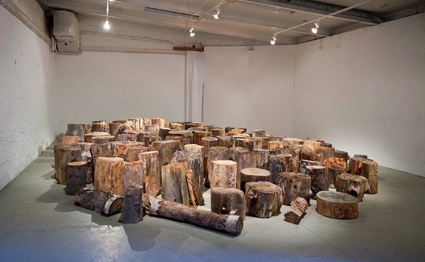
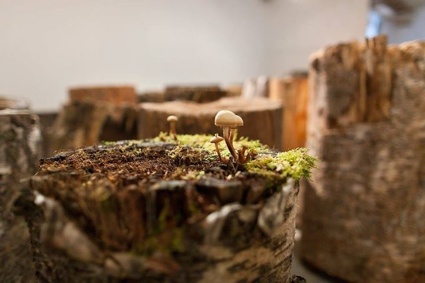 Antti Laitinen at Verkligheten. Photo: Fanny Carinasdotter
Antti Laitinen at Verkligheten. Photo: Fanny Carinasdotter
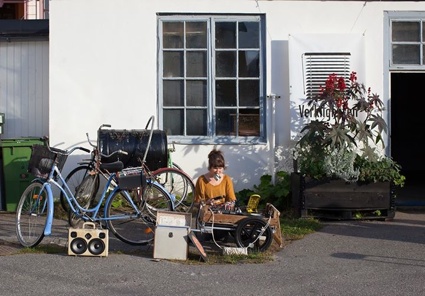 Lisa Busby. Photo: Fanny Carinasdotter
Lisa Busby. Photo: Fanny Carinasdotter
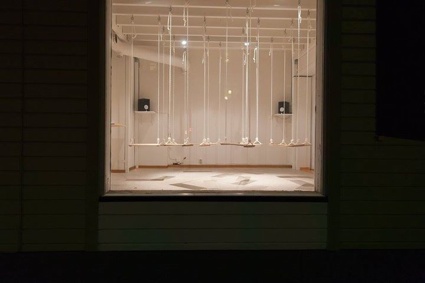 Emma-Lina Ericson, I Still Have an Other-Ache at Kungsgatan 92. Photo: Fanny Carinasdotter
Emma-Lina Ericson, I Still Have an Other-Ache at Kungsgatan 92. Photo: Fanny Carinasdotter
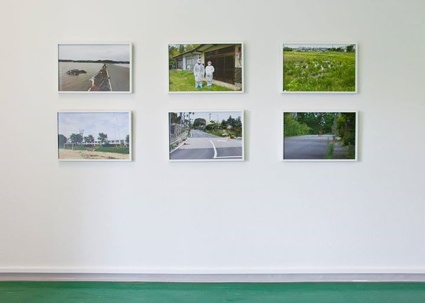 Atsuko Otsuka‘s photo showing animals living in the “no-go zone” in Fukushima. Photo: Fanny Carinasdotter
Atsuko Otsuka‘s photo showing animals living in the “no-go zone” in Fukushima. Photo: Fanny Carinasdotter
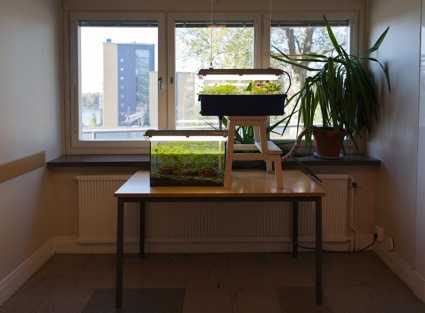 Erik Sjodin, installation with aquaponics system
Erik Sjodin, installation with aquaponics system
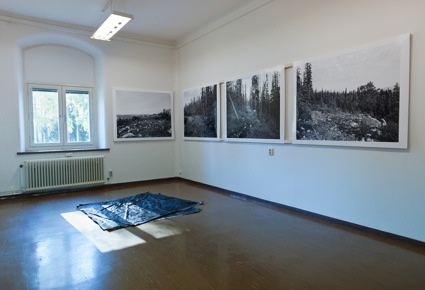 Erik Mikael Gudrunsson’s work
Erik Mikael Gudrunsson’s work
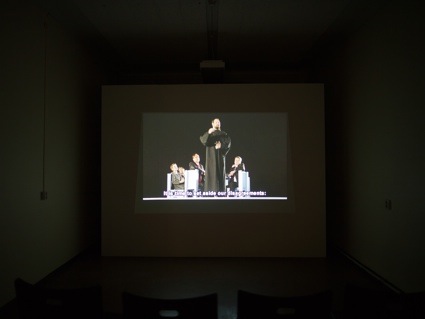 Chto Delat, The Tower
Chto Delat, The Tower
The festival, which ran in collaboration with Survival Kit 6 in Riga, was organised by Verkligheten, a non-commercial and artist-run gallery that explores various kinds of art expressions.
